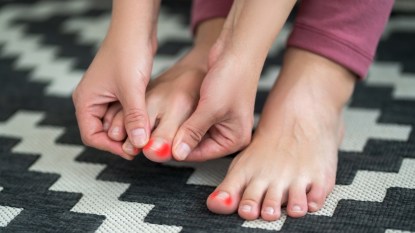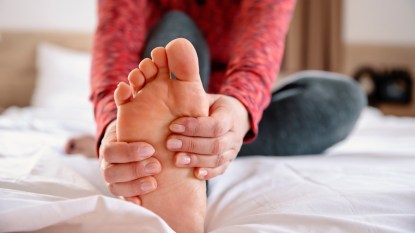Just 2 Minutes of Walking After Eating Is Beneficial, Study Shows
Even a brisk walk can help lower your risk of diabetes and heart problems.

You’ve probably heard that going on a walk after eating a robust meal will make you feel better. For quite a while, the consensus has been that 10 minutes of “postprandial walking” (otherwise known as strolling post-eating) helps with digestion and keeps your belly from feeling too full and uncomfortable. A recent study, however, shows that even a very light walk after a meal — say, two to five minutes — can help lower your risk of type 2 diabetes and heart problems. Sounds nice and easy!
Published in Sports Medicine, the study’s findings indicate that short walks reduce blood sugar and insulin levels. (Blood sugar levels spike after eating, and the insulin that’s produced to control them can lead to diabetes and cardiovascular issues.)
The findings are, in fact, based on the collated results of seven studies that looked at how sitting, standing, and walking affected heart health. (Researchers gauged heart health by insulin and blood sugar levels.) In five of the seven studies, none of the participants had prediabetes or type 2 diabetes at the start of the study. In the remaining two studies, participants included people with and without diabetes. In all seven studies, participants were asked to either stand or walk for two to five minutes every 20 to 30 minutes over the course of a full day.
The results of all seven studies determined that standing after a meal is better than sitting, and taking a short walk after a meal is even better than that — in fact, a quick stroll was enough to significantly improve blood sugar levels. Participants who stood up for a short period of time after a meal had improved blood sugar levels but not insulin, while those who took a brief walk after a meal had lower blood sugar and insulin levels.
Additionally, those who walked had blood sugar levels that rose and fell more gradually — and for people with diabetes, avoiding dramatic fluctuations is a key factor in managing the illness.
While walking at any time is good for your body, the study authors concluded that taking a “mini-walk” 60 to 90 minutes after eating offers the best results.
The research of lead study author Aidan Buffey, a PhD student in physical education and sport sciences at the University of Limerick, focuses on physical activity in workplace environments. In a recent New York Times article, he pointed to the practicality of adding a short walk to your workday routine, noting that people “are not going to get up and run on a treadmill or run around the office,” but that they can easily get some coffee or take a walk around the block between Zoom calls.
And if you can’t take a walk, try to at least stand up and move around after lunch. Even doing light housework will engage your muscles and help counter the effects of a sedentary lifestyle.













